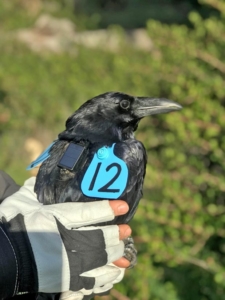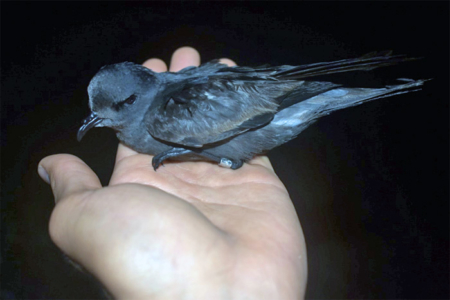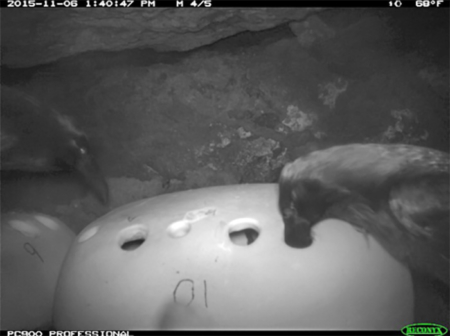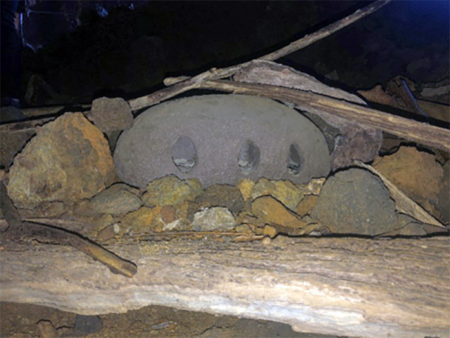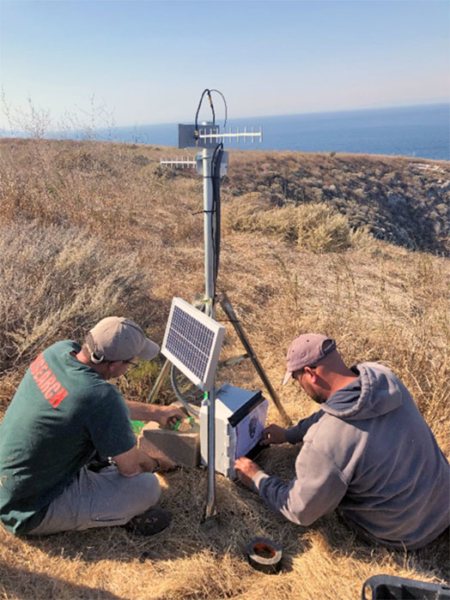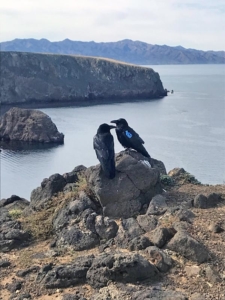
A pair of common ravens at Santa Cruz Island. One member of the pair is marked with blue vinyl wing tags as part of our study on common raven movements and foraging habits.
If you see a raven with a blue wing tag, we would love to hear from you! Please record the date, time, approximate location, wing tag number, and any interesting behavior. Please report the tag to the USGS Bird Banding Laboratory at www.reportband.gov and you will receive a Certificate of Appreciation and learn more about the history of that bird. This study is a multi-year collaboration with the majority of funding coming from the National Fish and Wildlife Foundation and the U.S. Fish and Wildlife Service. For more information, please contact data@ciesresearch.org and we’d be happy to answer your questions.
Common Raven Research Study Information
Common raven populations have increased dramatically over the past four decades in the western United States including at the Channel Islands. We have teamed up with the Channel Islands National Park, Institute for Wildlife Studies, and Oikonos Ecosystem Knowledge to understand the seasonal movements and foraging habits of ravens at Santa Cruz Island. Using motion-activated cameras, we have detected ravens impacting sensitive nesting seabirds, such as the ashy storm petrel. In order to understand more about this impact, we will mark up to 30 common ravens at Santa Cruz Island around the most affected storm-petrel colonies.
These birds will be marked with USGS metal leg bands and numbered blue vinyl wing tags. In addition, 10 of these ravens will carry a small GPS tracker/transmitter. Wing tags are used to identify individual birds from longer distances and in motion-activated camera photographs.
We are also testing the use of avian predator-proof artificial nest modules to protect nesting ashy storm-petrels. Motion-activated cameras will record interactions of ravens with these ceramic nest modules to help us determine their effectiveness and inform any necessary modifications that may be needed to make them as effective at providing nest sites while protecting the adults, chicks, and eggs.
